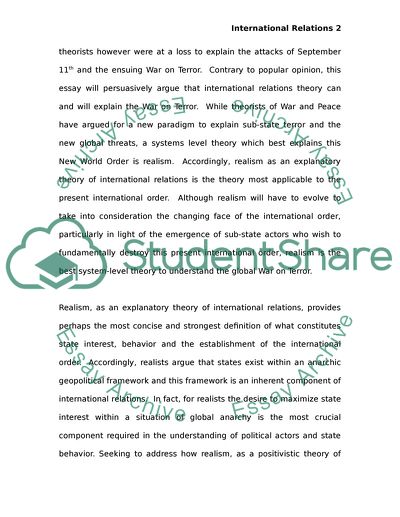Cite this document
(Realism and International Relations Theory Literature review, n.d.)
Realism and International Relations Theory Literature review. Retrieved from https://studentshare.org/sociology/1556891-realism-overlooks-many-of-the-important-actors-and-phenomena-in-contemporary-world-politics-and-thus-gives-us-an-inadequate-account-of-insecurity-in-world-politics-duscuss-this-statement-illustrate-your-essay-with-examples
Realism and International Relations Theory Literature review. Retrieved from https://studentshare.org/sociology/1556891-realism-overlooks-many-of-the-important-actors-and-phenomena-in-contemporary-world-politics-and-thus-gives-us-an-inadequate-account-of-insecurity-in-world-politics-duscuss-this-statement-illustrate-your-essay-with-examples
(Realism and International Relations Theory Literature Review)
Realism and International Relations Theory Literature Review. https://studentshare.org/sociology/1556891-realism-overlooks-many-of-the-important-actors-and-phenomena-in-contemporary-world-politics-and-thus-gives-us-an-inadequate-account-of-insecurity-in-world-politics-duscuss-this-statement-illustrate-your-essay-with-examples.
Realism and International Relations Theory Literature Review. https://studentshare.org/sociology/1556891-realism-overlooks-many-of-the-important-actors-and-phenomena-in-contemporary-world-politics-and-thus-gives-us-an-inadequate-account-of-insecurity-in-world-politics-duscuss-this-statement-illustrate-your-essay-with-examples.
“Realism and International Relations Theory Literature Review”, n.d. https://studentshare.org/sociology/1556891-realism-overlooks-many-of-the-important-actors-and-phenomena-in-contemporary-world-politics-and-thus-gives-us-an-inadequate-account-of-insecurity-in-world-politics-duscuss-this-statement-illustrate-your-essay-with-examples.


